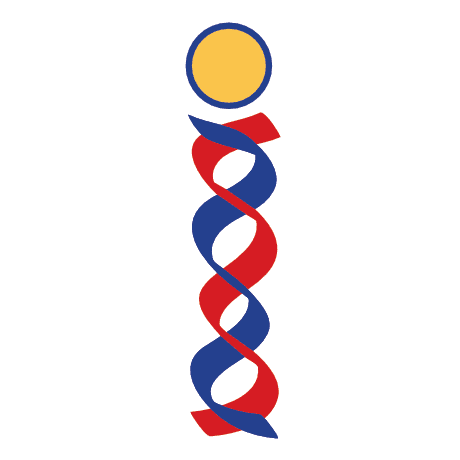The Finders by Jeffery A. Martin provides a map for ‘higher’ or awakened states of consciousness, regardless of how anyone gets there. It is based on replicable research, and using ‘gold standard’ techniques of meditation and self-inquiry. The basic goal is to replace our usual discontent with life and ourselves with a durable sense of fundamental wellbeing, regardless of spiritual tradition or religious affiliation. Key research insights:
- No one tradition or set of teachings has a monopoly on enlightenment / non-duality / self-transcendence / Peace / spiritual awakening. People get there from all kinds of backgrounds, including total atheism, and for some people, it’s almost accidental.
- For everyone, it is characterized by reduced internal mental chatter, and recognizing one’s true nature as awareness with fundamental wellbeing / peace /equanimity as its normal experience.
- There’s no set of practices that works for everyone, each person has to find what works for themselves.
- Being comfortable for an hour is more important than ‘proper’ meditation posture.
- People don’t necessarily land in the same ‘place’, experience or new mindset. If it’s stable and persistent, enjoy and deepen.
- The book / model also explains why some “spiritual” or “consciousness“ teachers with a great depth of awakening behave inappropriately with power, sex, drugs and booze. Awakening doesn’t immediately get rid of all the personal conditioning, and it has to be recognized and released, which takes a while.
(N.B. When it comes to health and personal growth: Accessing fundamental wellbeing does not mean an automatic improvement in health, and no such claims are made.)
As healers and therapists, from a profound sense of service, we’re continually looking for ways to further our education, deepen our understanding and find better ways to help clients. The internet, as well as provider offices, is full of healing approaches that someone has studied or found works for them, or programs for marketing and convincing prospective clients. The wellness industry is littered with unfulfilled sales promises.
It hit me the other day: À Chacun Son Goût. Just because I have a new, wonderful approach doesn’t mean it’s going to work for anyone else, regardless of my enthusiasm.
As a starting point, is there anything that corresponds to the above bullet points? Well:
- No one model or framework has a monopoly on health and wellbeing, or what it means to individual people.
- There’s no set of health practices or exercises that works uniformly well for everyone.
- Doing the exercises you want to do as much as possible (including energy work or visualization), is more important than the exercises you should be doing.
- People don’t necessarily land in the same experience or mindset for health and wellbeing, so if it’s working, keep doing it.
- The open-system exchange of energy and information with the entirety of your environment is constantly changing, and challenges from long-standing, deep-seated issues or blockages will regularly be triggered and come to the surface to be resolved and healed. Nothing settled and permanent, nothing fixed and final.
So we really have to discover: Right now, what’s going to work for the client?
This also entails completely letting go of any egoic thinking we know what’s best for the client, but also any favorite model of healing.
There is one clue from Finders: use proven, “gold-standard” approaches. If one approach doesn’t work after a while, try something else. Obviously, someone with knowledge and experience in these approaches is a good place to start – but as a facilitator in a process that absolutely needs to be cooperative. A coaching model is likely to produce better results than the old authority-figure healer-dependent patient model. The client naturally wants an outcome-based service. Fair enough – but if we treat clients as consumers, is it any surprise they go doctor-shopping? And in different contexts, we’ve probably all felt the need to assert our independence against a pushy sales pitch by saying “I’ll think about it.”
We need the ‘healer’ to be coming as much as possible from spiritual self, non-dual awake awareness, observer consciousness, Míngjué or Yiyuanti in Qigong, rather than any kind of ‘expert’ ego – or sales pitch. There’s a subtle reason for this, in addition to what we might normally expect.
In observer consciousness, the sending and receiving of information in consciousness happen simultaneously, and there is no ‘subject-object’ separation or dissociation between consciousness and body. It is like a mirror that can reflect external phenomena, is also aware of itself and everything it is reflecting. Crucial to this is the clarity of consciousness Qi, its energy and information.
In turn, this means the ‘healer’ is far more able to tune into, become resonant with, the entirety of the client’s state, but without needing to interfere with the healing priorities of the client and their own spiritual self.
A wild stab in the dark, but I’m guessing the client’s essential, spiritual self would like to be treated with respect. If the client is committed to the healing, to putting aside the time to sit relaxed, and participating with gentle focus (such as with a Qigong healing mantra), then they’re also treating their own spiritual self with the respect it deserves.
“……the Self is the center of healing in any therapeutic model or modality, whether it is acknowledged as such, called by another name, or conceived differently, such as a ‘capacity to heal’ or a quest for wholeness, inner wisdom, or even referred to as the biological effects, such as ‘rewiring the brain.’ …… the wholeness of the transpersonal Self is self-evident, inherently undamaged, can be accessed readily with willingness and openness, and self-healing.”
Monique M. Verrier
Each of us has to work it out for ourselves, our view of reality and how we interact with our reality, and how best to go about our healing and our awakening.

© Malcolm Fraser 2022. All rights reserved.




